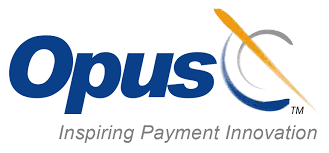Can you give our readers some background on Opus Consulting and its role within the payments industry?
We’re a technology services and solutions company focused exclusively on meeting the needs of the payments industry. Opus Consulting is headquartered in Chicago, and we have about 800 business and IT professionals located in the U.S. and India. We develop and deliver solutions from our CMMI Level 5 certified delivery centers in Pune and Chennai.
Our industry service lines include remittance, cards, retail and payments, and our technology service lines deliver digital, data management, analytics and testing solutions. We’ve provided services and solutions for clients in more than 30 countries, including over 150 implementations of switching systems and solutions that support prepaid card programs and card-less ATM withdrawals. We also deliver solutions that integrate multiple service channels—traditional, web, mobile and kiosks—for seamless payments processing.
Can you go into more detail about innovation in your company and how it is beneficial to merchant acquirers, issuers, remittance-service providers, and processors?
Innovation is key to our delivery model and we are constantly developing IP in the form of enablers and accelerators that help us deliver the improvements clients need to meet their current and future IT requirements. For example, we just announced a new solution, an EMV Transactions Accelerator, with plug-in components that are inserted before and after an existing payments authorization engine. It’s a quick, cost-effective way for issuers, acquirers and processors to leverage existing systems to speed processing of EMV chip-card transactions. Similarly, when messages are sent either to or from a connected source and any bank host/issuer network, the message standards and formats in use may vary, so we built the MessageMap tool which converts messages to the formats required for processing by the source and host/issuer systems.
On the consulting side of your business, what have you identified as some of the pain points that merchants are experiencing today and what recommendations would you make to help alleviate those pain points?
Merchants and retailers are working through the pain points of regulation, with PCI compliance and also the ongoing transition to EMV, which—for the U.S.—was mapped out by other countries, as they have already transitioned beyond chip and PIN to real-time payments conduits. However, in the U.S. many firms are looking at EMV as an expense instead of as an investment, so consumers often find themselves waiting for a slow-performing EMV transaction—an annoyance in an age where everyone wants instant gratification. The evidence from abroad, such as in the U.K. where faster payments initiatives are already in place, is that the eventual benefit will come through to merchants in the form of better liquidity and cash management.
With the frequent advancement of payment related technology, faster payments is a subject that continues to gain attention. What do you believe will be necessary to get the United States to that point and when do you believe that will be achievable?
By 2020, I believe that the majority of retail payments — about 75% — will be processed in “real time,” and the remaining 25% or so will be processed “traditionally”— by check, ACH, or credit/debit cards. Here’s why I believe this will happen.
Last year, Forbes published an article citing the results of a survey that found the financial capabilities of America’s leading technology companies — PayPal, Amazon, Google and Apple — are now trusted more by U.S. consumers than are the country’s biggest banks. IT firms don’t have to be in the “banking business” to provide superior payment and money- transfer services. So banks are now, finally, convinced that they will lose a lot of customers if they don’t have real-time money transfer capabilities. We believe that over the next 5-10 years, the backend infrastructure for payments will go real time, so what we are doing is working on things that will enable a real-time payment architecture. While banks will have to migrate their back-end systems to real-time processors, the ACH network will need to go real-time too.
As the payment industry continues to evolve what are some big changes that you foresee happening over the next five years?
In addition to real-time payments, we believe that a huge transformation is still required on the retail side of the house, where the checkout experience needs to be improved. The rapid growth in the volume of online shopping speaks to the positive experience customers are having with that channel—Amazon has set this “satisfaction bar” very high for all retailers to reach. The popularity of mobile payments in retail also continues to grow, supported by improvements in NFC technology and secure transaction processing.
We are putting together a bundle of solutions where we are doing everything including intelligent POS, intelligent ATM and intelligent retailer ecommerce experiences, which is all enabled by taking out the intelligence from hardware and putting it out in the form of APIs. We are one of the few companies who have actually done it. I see digital payment transformation as a big vehicle for industry opportunity and IT-services growth through 2020.











